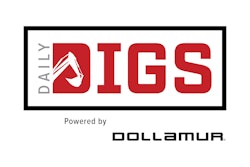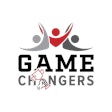|
Copyright 2013 The Atlanta Journal-Constitution The Atlanta Journal-Constitution |
|
October 23, 2013 Wednesday
Main Edition |
|
SPORTS; Pg. 1C
|
|
1037 words
|
| ncaa controversy targeting; New rule taking a hit College football's targeting rule under fire |
|
Tim Tucker; Staff
|
|
NCAA might look at 15-yard penalty, enforced even if ejection reversed. |
|
More than 50 major college football players have been flagged this season for delivering high hits that can result in automatic ejection under the targeting rule. But almost 30 percent of those players were allowed to stay in the game when video replay revealed the call was in error. The reversals underscore the difficulty of making such calls in real time and the problem of a quirk in the rule that leaves a 15-yard penalty in force even when instant replay overturns an ejection by finding no targeting occurred. The targeting rule, which forbids hitting defenseless players above the shoulders or delivering a blow with the crown of the helmet, was strengthened this year for the best of reasons: player safety. Amid increased awareness of the risk of concussions and other head injuries in football, the new ejection penalty was seen as a way of forcing necessary change in how the game is played. Nevertheless, the evolution has stirred controversy since the start of the season, escalating last weekend when four high-profile teams --- Florida, Georgia, Ohio State and South Carolina --- had players ejected. At least three of those ejections were for hits that the teams' coaches considered less egregious than the rule was designed to prevent. In all, seven players were called for targeting in FBS games last week, with two of them allowed to stay on the field when their automatic ejections were overturned by the replay official. So far this season, 52 FBS players have drawn targeting fouls, with 15 of those players --- 29 percent --- reinstated to the game after video review, according to figures obtained from the NCAA. The NCAA's football rules committee adopted the targeting rule in 2008, but stiffened it this year by adding ejection to the existing 15-yard penalty. Referees were instructed to call the foul when in doubt. If the foul occurs in the second half, the player also must sit out the first half of the next game. "The new element of automatic disqualification as part of the penalty was added because the committee felt that only having a 15-yard penalty was not severe enough punishment," NCAA spokesman Cameron Schuh said in an email. "The committee's belief is that we needed more in order to get the players' attention about the seriousness of these fouls, which can cause catastrophic injury." The NCAA believes the threat of ejection is working because targeting fouls are down from last season --- one per 9.2 games this season compared with one per eight games last season. "In addition, there is anecdotal evidence of players changing their tackling techniques and approach to try to avoid the illegal contact," Schuh said. Georgia did not incur a targeting penalty in its first six games, but in Game 7 it drew two costly and controversial ones. The first --- against defensive end Ray Drew for a hard, high shove of Vanderbilt's quarterback in the second quarter --- was upheld on review. Among many criticizing Drew's ejection was former NFL vice president of officiating Mike Pereira, now Fox Sports' rules analyst, who wrote that the play could have been roughing-the-passer, but "no way" was it targeting. "I don't think that the rule was designed for that type of play, quite frankly," Georgia coach Mark Richt said. The second targeting foul against Georgia came for a textbook, shoulder-to-chest hit that linebacker Ramik Wilson delivered to a Vanderbilt receiver in breaking up a fourth-down, fourth-quarter pass. Wilson's ejection was overturned when the replay official found the call indisputably in error. But because the accompanying 15-yard penalty isn't reversible, the Commodores retained possession and went on to score a touchdown. "Obviously, the one on Ramik was a good, clean play. The officials after reviewing it felt the same way," Richt said. "But because of the rule ... you still have that 15-yard penalty. "My guess is that'll be one of the biggest topics, the hottest topic, on this rule --- if you're going to review it to let a guy stay in the game because you don't think it was targeting, that you might possibly take the (15-yard) penalty away." Among the players ejected Saturday: Ohio State All-American cornerback Bradley Roby for making contact with an Iowa receiver's helmet on a high, shoulder pads-first hit. "I think the NCAA and everybody is going to want to relook at that rule," Ohio State coach Urban Meyer said at his weekly news conference Monday. "... Make sure we're doing the right thing for player safety, but understand the devastating impact on that game when you're out. I'm interested to see what's going to happen down the road." The rules committee, which meets in February, is expected to reconsider at least the part of the rule that forbids canceling the 15-yard penalty even when the replay official makes it clear by overturning an ejection that the foul should not have been assessed. The committee's original logic was that ejection is such extreme punishment it should be routinely reviewed, but that reversing the yardage penalty could lead to calls for reviews of all sorts of other fouls. Also, on some plays deemed upon review not to constitute targeting, another penalty could apply, such as roughing-the-passer. The committee did not want to shift that much officiating to the replay booth. SEC coordinator of football officials Steve Shaw forecast before the season that the targeting penalty would be "the most significant rule change" in 20-plus years. Eight weeks into the season, that assessment seems on target. Staff writer Chip Towers contributed to this article. NCAA TARGETING RULES Rule 9-1-3: No player shall target and initiate contact against an opponent with the crown (top) of his helmet. When in question, it is a foul. Rule 9-1-4: No player shall target and initiate contact to the head or neck areas of a defenseless opponent with the helmet, forearm, fist, elbow or shoulder. When in question, it is a foul. Penalties: In addition to a 15-yard penalty, the player is automatically ejected from the game. The replay official can overturn the ejection, but not the 15-yard penalty, if video evidence is indisputable. If a player is ejected in the second half, he also must sit out the first half of the next game. |
|
October 23, 2013
|
Terms and Conditions Privacy Policy



































